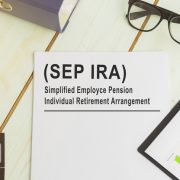Yearly Self-Directed IRA Changes that Retirement Savers Have to Watch
The strategy behind using a Self-Directed IRA is simple: put money aside in a tax-protected account and watch it grow until retirement. But many times, the yearly tax issues of dealing with a Self-Directed IRA can be much more than you bargained for. In addition to all sorts of different rules for married individuals, singles, and different rules based on age and income, it can get tough to keep track of everything.
Let’s help cut through that clutter by pointing out some of the most important changes you can see from year-to-year when it comes to your Self-Directed IRA:
- Self-Directed IRA Contribution Limits
True, contribution limits don’t always happen every year. But it’s worth setting a yearly reminder, just to make sure. After all, Congress often makes adjustments to laws pertaining to IRAs, which means that people might have higher contribution limits than they otherwise thought. That’s the case in 2018 moving into 2019, as IRA contributions are now up to $7,000 limits for those who are 50 or older, and $6,000 for those 49 and younger.
You may also want to pay attention to the contribution limits for SIMPLE 401(k) plans and SIMPLE IRAs. These plans are designed for small business owners providing for their own retirement. In 2019, for example, contribution limits on SIMPLE 401(k) plans and SIMPLE IRAs are up to $13,000. So, make sure that you do more than just cursory research when looking up your own limits—they may be far higher than you imagined. And those rules can and do change between some years.
- Watch the Deduction Rule Changes
Your deductions for Self-Directed IRA contributions can vary wildly depending on a few factors: whether you are married and filing jointly, whether you are single or head of your household, whether you are married and filing separately, etc. Then there are the issues of whether you or your spouse are covered by workplace retirement plans—the list goes on and on. For example, you get a full deduction up to the contribution limit on $101,000 adjusted gross income or less in 2019 if you are married and filing jointly.
Did that sentence give you a headache?
In this case, it can get so confusing that it’s best that you have a tax professional look over your Self-Directed IRA strategies throughout the year and make sure that you’re on the right path. At the minimum, make sure that you have fully updated tax software that understands the rule changes and alerts you to what the requirements will be.
- Income Limits on Self-Directed IRAs
This applies to all IRAs, but since Self-Directed IRAs are not technically a separate “kind” of IRA, but simply a strategy you choose for yourself—it helps to pay attention to any of these changes.
Always be sure to watch the income limits on your contributions and how they are deducted, as briefly touched upon in the previous section. For example, your Traditional IRA is always deductible if neither you or your spouse are eligible to participate in an employee-sponsored retirement plan (assuming that you meet all other requirements as well).
Getting the Most Out of Your Retirement Savings
It’s not always easy to keep tabs on everything in the world of retirement. Even adamant retirement savers have other things to do—a life to lead before retirement rears its head. But you should set a yearly reminder for yourself to make any adjustments to your contributions and deduction plans based on the current regulations of IRAs, including Self-Directed IRAs.
Interested in learning more about Self-Directed IRAs? Contact American IRA, LLC at 866-7500-IRA (472) for a free consultation. Download our free guides or visit us online at www.AmericanIRA.com.







